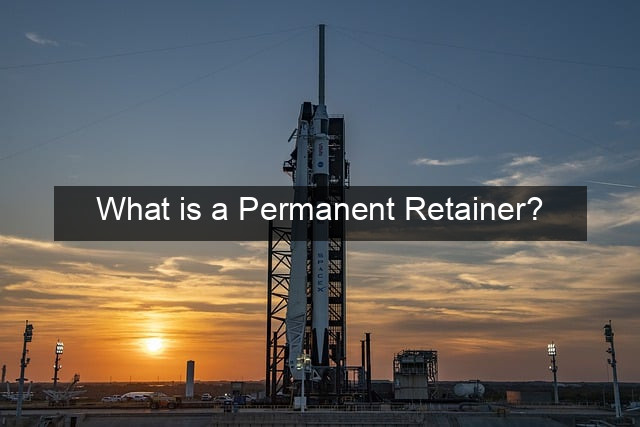What is a Permanent Retainer?

- What is a Permanent Retainer?
- What is a Permanent Retainer?
- Types of Permanent Retainers
- Fixed Wire Retainers
- Bonded Retainers
- Advantages and Disadvantages of Permanent Retainers
- Benefits of Permanent Retention
- Potential Drawbacks
- Caring for Your Permanent Retainer
- Oral Hygiene Practices
- Professional Maintenance
- Conclusion
- Frequently Asked Questions

What is a Permanent Retainer?
A straight, confident smile is often the desired outcome of orthodontic treatment. But maintaining that perfect alignment after braces or aligners come off requires a little extra help. This is where permanent retainers step in. Unlike removable retainers, which are worn intermittently, permanent retainers are bonded behind the teeth, offering a discreet and hassle-free way to preserve the results of orthodontic work. They are typically small, custom-made wires that are affixed to the back of the lower or upper front teeth. This ensures long-term stability and prevents teeth from shifting back to their original positions. While the idea of a “permanent” retainer might sound daunting, understanding their purpose, benefits, and potential drawbacks can help you make an informed decision about whether they’re the right choice for you.
Types of Permanent Retainers
Fixed Wire Retainers
The most common type of permanent retainer is the fixed wire retainer. This consists of a thin, solid wire bonded to the back of the teeth, usually the lower six front teeth. The wire is custom-fit to the individual’s teeth and uses dental adhesive to stay securely in place. This type of retainer is incredibly effective at preventing relapse and maintaining the alignment achieved through orthodontic treatment. It’s also very discreet, as it’s hidden behind the teeth and barely noticeable.
Fixed wire retainers are generally recommended for patients who have undergone significant orthodontic correction or have a higher risk of relapse. They are also a good option for those who might struggle with the responsibility of wearing removable retainers consistently. The durability of fixed wire retainers makes them a reliable solution for long-term retention.
While effective, fixed wire retainers require meticulous oral hygiene. Food particles can easily get trapped around the wire, increasing the risk of plaque buildup and gum inflammation. Regular flossing and brushing are essential to maintain good oral health with a fixed wire retainer.
Bonded Retainers
Bonded retainers are similar to fixed wire retainers, but instead of a solid wire, they may use a braided or twisted wire. They are also adhered to the back of the teeth using dental adhesive. These retainers are equally effective in maintaining tooth alignment and are just as discreet. The choice between a fixed wire and a bonded retainer often comes down to the orthodontist’s preference and the individual patient’s needs.
Bonded retainers provide a stable and consistent force to hold teeth in their corrected positions. This is especially important in the months following orthodontic treatment when teeth are most susceptible to shifting. The constant pressure applied by the bonded retainer helps to solidify the new tooth positions and prevent relapse.
Similar to fixed wire retainers, bonded retainers require diligent oral hygiene practices. Special flossing techniques may be necessary to clean effectively around the retainer. Regular dental checkups are also important to monitor the retainer’s integrity and ensure optimal oral health.
Advantages and Disadvantages of Permanent Retainers
Benefits of Permanent Retention
Permanent retainers offer several advantages. They are incredibly effective at maintaining tooth alignment, as they provide constant, passive pressure to prevent teeth from shifting. This eliminates the risk of forgetting to wear a retainer, a common issue with removable retainers. They are also discreet, hidden behind the teeth, and rarely noticeable in everyday life.
Another significant advantage is their convenience. Patients don’t have to worry about remembering to wear or clean a removable retainer. Once in place, permanent retainers require minimal maintenance beyond regular brushing and flossing. This makes them a hassle-free solution for long-term retention.
Permanent retainers are also a cost-effective solution in the long run. While the initial cost might be slightly higher than removable retainers, they eliminate the need for replacements due to loss or damage, which can add up over time.
Potential Drawbacks
While generally safe and effective, permanent retainers do have some potential drawbacks. They can make oral hygiene slightly more challenging, as flossing requires a bit more effort to clean around the wire. There’s also a small risk of the retainer breaking or becoming detached, requiring a visit to the orthodontist for repair or replacement.
Some patients may experience minor speech impediments initially, but this usually resolves as they adjust to the retainer. Additionally, permanent retainers are typically placed on the lower front teeth, which are susceptible to tartar buildup. Regular professional cleanings are essential to maintain good oral hygiene.
Finally, while considered “permanent,” these retainers may not last forever. They may need to be replaced eventually due to wear and tear or changes in the mouth. However, with proper care, they can last for many years, providing long-term stability to the teeth.
Caring for Your Permanent Retainer
Oral Hygiene Practices
Maintaining excellent oral hygiene is crucial with a permanent retainer. Brushing twice a day and flossing daily is essential to remove plaque and food particles that can accumulate around the retainer. Using a floss threader can make flossing easier and more effective.
Regular dental checkups are also important. The dentist can monitor the retainer’s condition, clean areas that are difficult to reach at home, and address any potential issues promptly. Professional cleanings help prevent tartar buildup and maintain optimal oral health.
Avoiding hard, sticky foods that could damage or dislodge the retainer is also recommended. Chewing on ice or hard candies should be avoided to protect the retainer and prevent potential complications.
Professional Maintenance
Regular visits to the orthodontist are essential for monitoring the permanent retainer and ensuring its continued effectiveness. The orthodontist can check for any signs of wear and tear, make necessary adjustments, and address any concerns the patient may have.
Professional cleanings are a vital part of maintaining a permanent retainer. The hygienist can thoroughly clean the areas around the retainer that are difficult to reach with regular brushing and flossing. This helps prevent tartar buildup and gum inflammation.
If the retainer breaks or becomes detached, it’s crucial to contact the orthodontist immediately for repair or replacement. Ignoring a broken retainer can lead to tooth movement and compromise the results of orthodontic treatment.
| Retainer Type | Pros | Cons |
|---|---|---|
| Permanent | Convenient, Effective, Discreet | Difficult to clean, Potential for breakage |
| Removable | Easy to clean, Removable for special occasions | Can be lost or forgotten, Less effective if not worn consistently |
- Brush twice a day
- Floss daily using a floss threader
- Visit your dentist and orthodontist regularly
- Avoid hard, sticky foods
Conclusion
Permanent retainers offer a reliable and convenient solution for maintaining the beautiful results achieved through orthodontic treatment. While they require diligent oral hygiene and regular professional maintenance, the benefits of long-term stability and discreet wear often outweigh the potential drawbacks. By understanding the advantages and disadvantages, and by committing to proper care, individuals can enjoy a straight, confident smile for years to come.
Frequently Asked Questions
How long do permanent retainers last?
With proper care, they can last for many years, even decades. However, they may eventually need to be replaced due to wear and tear.
Are permanent retainers noticeable?
They are bonded behind the teeth and are generally very discreet. Most people won’t even notice them.
Do permanent retainers hurt?
The placement procedure is generally painless. There might be some initial discomfort as you adjust to the retainer, but this is usually temporary.
Can I get a permanent retainer on my top teeth?
While more common on the lower teeth, they can be placed on the upper teeth as well, depending on the individual’s needs.
How do I clean my permanent retainer?
Brushing and flossing daily, using a floss threader, are essential. Regular dental cleanings are also important for removing tartar buildup.
What happens if my permanent retainer breaks?
Contact your orthodontist immediately. They can repair or replace the retainer to prevent tooth movement.
Are permanent retainers truly permanent?
While called “permanent,” they may need replacement eventually. They are designed for long-term retention, but not necessarily a lifetime.
What are the alternatives to permanent retainers?
Removable retainers, such as Hawley retainers or clear plastic aligners, are the main alternatives.
Who is a good candidate for a permanent retainer?
Patients who have undergone significant orthodontic correction, have a higher risk of


